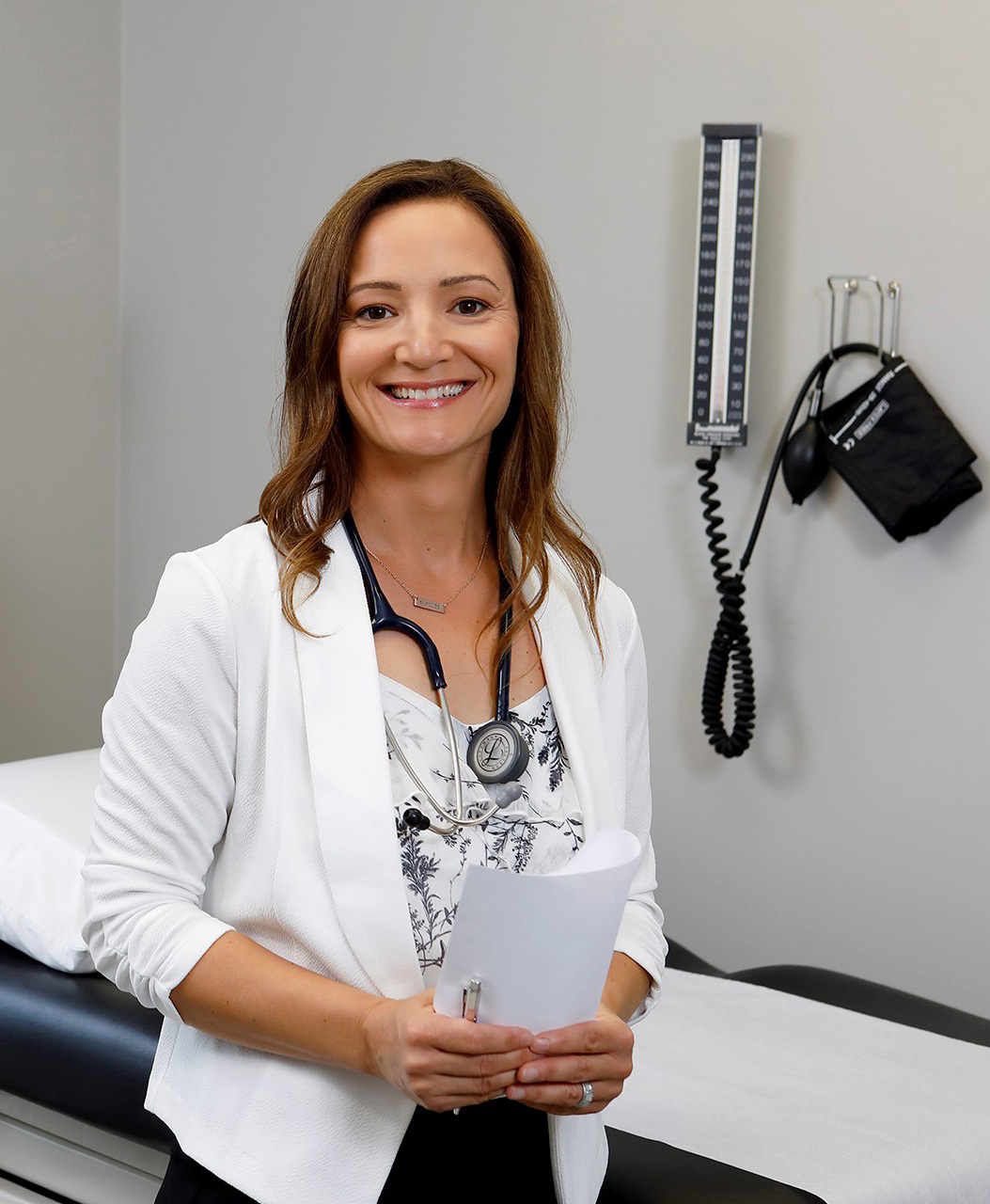
Distributed medical education boosts number of rural doctors
In her third year of medical school back in 2018-19, Lindsay Richels spent 10 months in Estevan as part of the first cohort of the Saskatchewan Longitudinal Integrated Clerkship (SLIC).
By Greg Basky for USask College of MedicineThis article is aligned with the USask College of Medicine's strategic directions.
The program immerses medical students in a rural community, enabling them to experience the life of a generalist physician with one-on-one teaching from a pair of local family doctors who serve as preceptors.
Now a second-year dermatology resident, Richels went into her clerkship having already decided that she wanted to become a specialist. While her time in southeast Saskatchewan didn’t alter those plans, Richels says it did provide her with a rich learning experience that has equipped her to be a better dermatologist.
“The independence I was afforded there gave me more confidence clinically,” says Richels. “As a soon-to-be physician at that time, I just grew so much more in my skills and my ability to manage patients and solve problems.”
The Longitudinal Integrated Clerkship, which also has sites in Meadow Lake, Melfort, and – as of August 2021 – La Ronge, is the newest opportunity available for medical learners to train in a rural setting as part of the college’s Distributed Medical Education (DME) program.
DME’s other major arm is the Department of Academic Family Medicine’s Rural Family Medicine Residency Training program, which prepares learners for family medicine certification by the Canadian College of Family Physicians (CCFP); it is offered in Prince Albert, Swift Current, La Ronge, North Battleford, and Moose Jaw.
Where the traditional “block” model sees third-year students move between different specialty rotations every six weeks in a tertiary center, SLIC learners get a constantly varied, hands-on experience right out of the gate, caring for patients who have a variety of health concerns and who are at all stages of life—from birth to death.

The approach mirrors the realities of practicing family medicine in rural areas, according to Dr. Tara Lee, a family physician in Swift Current and provincial director of the college’s SLIC program.
In her practice, she might see a child first thing in the morning, then a woman who’s expecting, then someone with depression, followed by a patient who just had surgery.
“These students are exposed to that, and they’re taught to see patients in a holistic way, meaning that a patient isn't just surgical, they aren't just here to receive surgery or a patient just isn't an obstetrical patient. My patient who is coming in for prenatals might also have depression.”
According to Lee, this type of training has been around for a number of years. Many medical schools in the United States have adopted the approach, with training now based exclusively on a longitudinal integrated clerkship model.
Having the opportunity to care for and follow the same patients over time was a big draw for Richels.
“With rotation-based learning, you really don’t know what happens to them (patients). But in Estevan, I saw my patients all year, so I got to see the outcomes of my interventions.”
It was rewarding, she says, to change the course of a patient’s disease progression—for example helping patients with diabetes get their blood sugar levels down to recommended targets.
Lee says it’s the stories she hears from SLIC participants that confirm the program is equipping learners to be better doctors.
“They talk about the clinical encounters that were so empowering and important to them, and how much they’ve grown from the beginning to the end of their clerkship. When you hear them talk about how profound some of these relationships and experiences were, that’s when you know this continues to be the right thing to do for medical students.”
DME offers host of benefits

Dr. Tom Smith-Windsor, who until his retirement this summer was associate dean of Distributed Medical Education for the College of Medicine, thinks that in some ways the term “decentralized medical education” is actually more appropriate and descriptive.
“Basically, it’s exposing learners in medicine at all levels to medical education outside of Saskatoon, in smaller rural and regional communities around the province, which offer them much different experiences in the provision of health care.”
In Saskatchewan, first and second-year medical students spend five hours each year shadowing a community physician—though not necessarily in a rural or regional centre.
During the summer between Years 2 and 3, learners can do an elective called the Physician Rural Extern Program (PREP), where they spend anywhere from four to 10 weeks working with a rural or regional physician in family practice. In Year 3, students spend four weeks in a family practice in a rural or regional community, as part of their mandatory six-week block in family medicine.
Or, like Richels, they can apply for one of eight spots in the SLIC program.
Smith-Windsor says he met some skepticism when he first pitched the idea of DME to a faculty meeting during his first term as associate dean. He recalls someone at the back of the room asking where they planned to find the teachers. Lee acknowledges that growing SLIC has required building trust that the program meets all of the required learning objectives.
For medical learners, one of the benefits of training outside Saskatoon and Regina is that it can give them a deeper appreciation for the factors influencing a patient’s health.
“Distributed medical education gives physicians a much better understanding of the impact of a patient’s home life and community life on their health, and can influence what treatment protocols we prescribe, so they’re more realistic or doable for the patient,” says Smith-Windsor.
Communities, patients benefit from hosting medical learners
When medical students spend extended periods living and learning in a rural area, many of them end up staying there. Data from the Canadian Post MD Education Registry (CAPER) show that two years after they’d completed their certification through the Canadian College of Family Physicians (CCFP), 82% of graduates (that they could locate) from Saskatchewan’s five rural family medicine sites had stayed in province, with 59% in a rural or regional centre. After five years, 75% were still in Saskatchewan and 68% were practicing in a rural or regional community.
Anytime you have an academic program in a community, says Lee, you elevate the standards of care, because you bring in students who are asking questions about best practices.
“They’re always asking, ‘Do you have these things that we saw at the university? Do you have ultrasound here? Do you have simulation material here? Do you have this? Do you have that?’’’
When physicians take on students, they have to provide teaching, which means they have to do some research, and they have to update their skills and adapt to the new things that students expect, says Lee.
Where to from here?
As he retires from leading distributed medical education for the College of Medicine, Smith-Windsor is confident the program will continue to flourish. High on his list of hopes is that more administrative support is provided to preceptors – ideally within each host community – to help coordinate placements and housing for visiting students.
At the La Ronge SLIC site, work has begun on an Indigenous health curriculum, which will be developed and led by the local Indigenous community.
“Students will have an experience created by the Indigenous leaders and educators that is in keeping with what they feel is important for medical students at this stage,” says Lee.
And what sort of impression did Richels’ time in Estevan have on her?
“I've already talked to a few people at St. Joseph's (Hospital) about whether there might be opportunities for me to do some sort of outreach (dermatology) clinics there,” says Richels. “I know the facility. I love the people. And I love the town.”
